Start fishing better with FREE Weekly Video Tips delivered straight to your email.
dwayne hickey
-
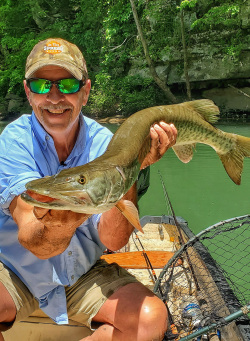
2021, Muskie - Fishing Post Spawn on the Collins River
Post-spawn muskie fishing involves downsizing and slowing retrieves, as fish recover from deeper holes. Dwayne Hickey, a Collins River expert, recommends working banks and systematically making multiple casts. Fishing skinny river waters requires patience, stretching multiple times, and accurate casting to find muskies.
WATCH NOW -
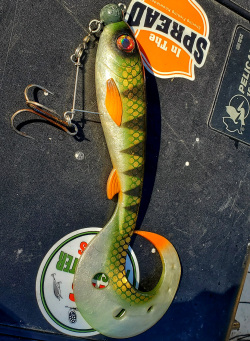
2020, Muskie - Fishing the Collins River Fall Transition
Collins River Musky fishing is a healthy, skinny water environment with deep holes, weed beds, rock beds, and wood. Dwayne Hickey, the Godfather of the Collins, shares his simplified approach to musky fishing, focusing on shallow stretches, deep holes, rock beds, and wood. His knowledge and experience can be applied to any small river system, making musky fishing more effective.
WATCH NOW -
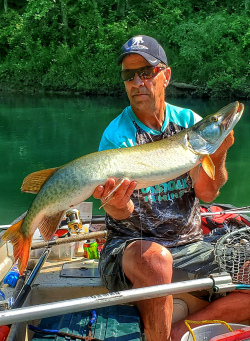
2019, Muskie - Collins River Post Spawn Fishing
Musky fishing in the south has evolved from a joke to a multidimensional sport, with big fish caught year-round. Dwayne Hickey, a renowned musky hunter, shares his expertise in the post-spawn musky hunt. By dissecting a river system, learning to work banks, weed beds, islands, trees, creek mouths, and topography, one can become a successful musky hunter.
WATCH NOW -
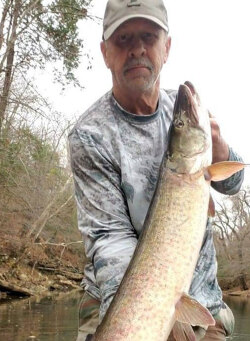
2022, Winter Musky Fishing: Cold Water Tactics with Dwayne Hickey
Dwayne Hickey shares proven winter musky techniques from decades on Tennessee's Collins River. Learn where cold water muskies hold, which lures trigger strikes below 50 degrees, and how to fish creek mouths and current breaks when other anglers stay home.
READ MORE -
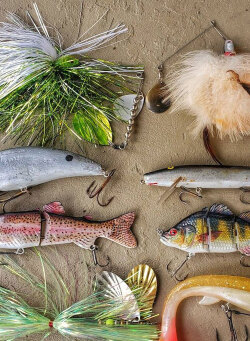
2021, Fall Muskie Fishing - Collins River with Dwayne Hickey
Southern muskie fishing in the summer is challenging due to the lack of closed seasons and ice covered rivers. However, abstaining from fishing is short but crucial for species health. Fall offers excellent action with various lures, including top water and spinnerbaits. Swim baits are available in various sizes and colors for clear and stained river water.
READ MORE -
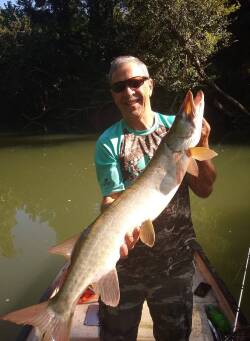
2020, Live Bait for Muskie - Dwayne Hickey
Live bait for muskie fishing is effective, especially in the fall/winter season. However, some argue it's unfair due to gut hooking. To avoid this, muskie anglers use two hooking systems: a quick strike rig, which prevents gut hooking musky, and a circle hook rig for safe hook-ups. Large baits like gizzard shad, bullhead catfish, and suckers are suitable for deep water lakes.
READ MORE -
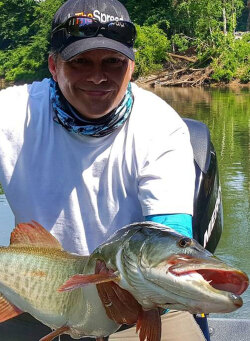
2020, Collins River Musky Fishing - Year Round Action
Northern musky anglers are in full musky mode as summer winds down, with musky fishing season closing by the end of November in states like Minnesota and Wisconsin. The Collins River near McMinnville TN offers a long fall season with low temperatures and clear water. September is a great time for musky fishing, with September rains providing better fishing conditions. Musky live bait and weed beds are common in shallow, weedy areas.
READ MORE -

2020, Collins River TN Fishing - Dwayne Hickey
The Collins River in Tennessee offers world-class musky fishing, with trophy specimens thriving alongside smallmouth bass and red eye perch. Once extinct from these waters, the reintroduced musky population now sustains itself naturally, making this McMinnville waterway a premier destination for anglers seeking excitement in the clear, limestone waters year-round.
READ MORE -
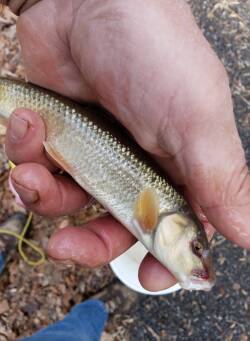
2020, How to Catch Baits for Muskie Fishing
Local bait stores may not carry the necessary live bait for certain situations, such as bass, catfish, musky, and striper fishing. In the Volunteer state, laws regarding the sale of live minnows have changed, so anglers must catch their own. Small creeks and streams often have the big bait needed for various fishing situations. Casting nets are the best method for catching larger musky bait.
READ MORE -
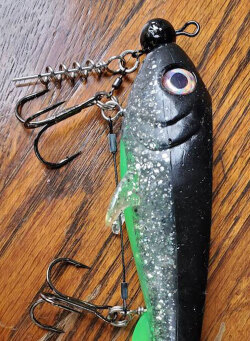
2019, Big Tackle for Musky Fishing
Tackle failure is common in musky fishing, leading to costly losses. To avoid this, use the right fishing line, quality leaders, sharp fish hooks, and proper tie-up. Choose braided line for baitcasters and spinning reels, invest in quality leaders, file hooks for smooth drag, and use strong knots for a successful musky fishing experience.
READ MORE -

2019, Sculling for Bass with Dwayne Hickey
Pitchin and flippin is a popular technique used by bass anglers to catch big bass. It involves using a flat bottom boat, scullin paddle, and a 7 or 8-weight fly rod. The technique is effective in areas with ten feet or less of bass and can be used during cold winter or moon periods. The best times for sculling are March and April, with night sculling from May through September.
READ MORE -
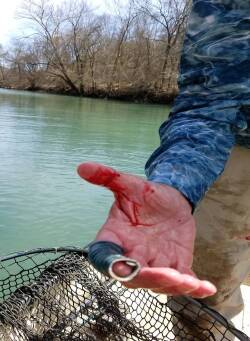
2019, Getting Hooked by a Fishing Hook - Dwayne Hickey
The author, a 25-year muskie fisher, has learned the importance of proper care during unhooking and picture-taking. They made mistakes like leaving a lure in a musky's mouth, causing pain, and using gloves on a fish. They also learned to avoid further complications.
READ MORE -

2019, Is It Too Hot for Muskie Fishing - Dwayne Hickey
Muskie fishing in the northern US begins as ice melts, but in the south, water and air temperatures must be taken seriously. Surface temperatures can reach 85 degrees or higher, leading to "A.C. fever." Conservative anglers should consider taking a break during hot summer months, ensuring fish survival.
READ MORE -

2019, Summer Walleye Fishing - Dwayne Hickey
Walleye fishing in the south is popular during summer, with fish typically hanging together in shallow water depths. Three methods include trolling crank baits, trolling motors, and night fishing under lights. Slow trolling techniques catch walleye, bluegill, catfish, and bass. Bug repellent is essential for effective fishing.
READ MORE -
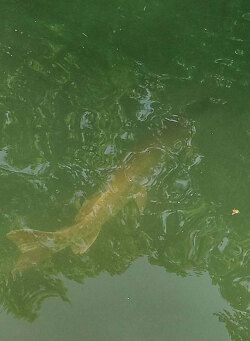
2019, Muskie Follows - Dwayne Hickey
A follow is a muskie that chases a lure back to the boat, revealing its cover and feeding window. Experience on the water can help handle a follow, as it allows for better decision-making and rehearsing of the visual. Muskies are curious and can be exciting to catch.
READ MORE -
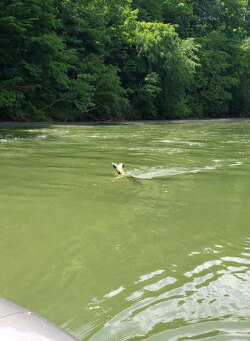
2019, Fishing Rivers - Boat Position is Key
At age seven, the author began fishing with their dad and grandfather on the Collins and Rocky rivers and the upper Caney Fork river. They learned to control their boat using an easy arm paddle and long pole. Fishing on rivers requires knowing where fish are holding, navigating logs and ledges, and keeping the boat in control. Taking turns fishing is essential for success.
READ MORE -
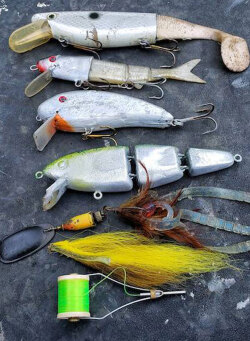
2019, Musky Lures - Repair or Refurbish
Musky lures often get forgotten due to various reasons, such as clear coat peeling, faded bucktails, repeated abuse, or lost confidence. To revive these lures, you can repaint and repair them, re-tie them, or combine them with other lures for a new look. Airbrushing is a popular method, but aerosol cans and screens can also be used. Proper care can also help retain the luster of bucktails.
READ MORE -
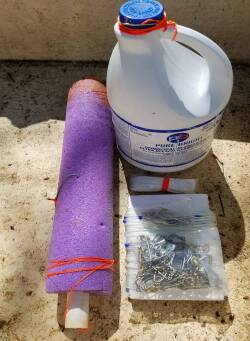
2019, Catfishing Techniques - Jugs and Trot Lines
Spring camping trips often involve catfishing using jugs, limb lines, and trot lines. Cats are abundant in the south, and setting up jugs, limb lines, and trot lines can be a great way to stock the freezer. Live bait, fresh cut bait, and limb lines are effective for flathead catfish.
READ MORE -
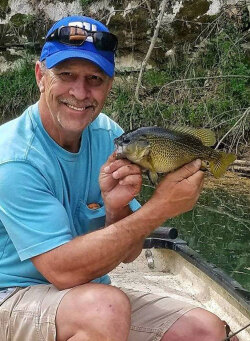
2019, Spring Bass and Perch Fishing - Dwayne Hickey
Creek fishing in Tennessee starts in mid-March, attracting smallmouth bass, catfish, bluegill, and shell crackers. Small creeks and rivers offer great opportunities for fishing, with wading upstream and using small top water lures. Live bait and crawfish are excellent choices for targeting river fish, with simple rigs and fast action rods.
READ MORE -

2019, Trophy Musky Fishing - Best Time - Dwayne Hickey
Catching a Trophy Musky in middle Tennessee is best during late winter/early spring. Muskies can be found in Center Hill lake and Great Falls reservoir. Fishing is best during warming trends, pre front conditions, and moon phases. Use six-inch twitch baits, soft rubber swim baits, and slow steady retrieves.
READ MORE
